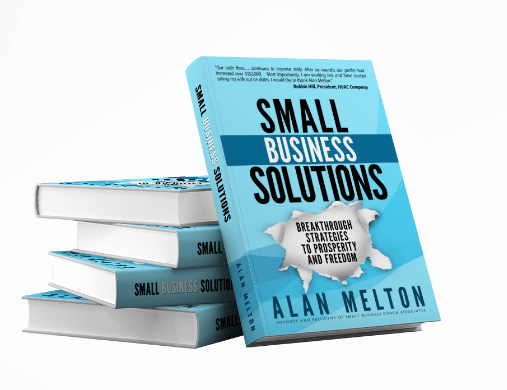VIEW BY TOPIC
- Finding Customers
- Business Systems
- Managing Employees
- Leadership
- Managing Money
Related Posts

Ready to Grow Your Business Fast?
Here’s How I Grew Five Businesses, and Eventually Sold One to a Fortune 500 Company.

Creating a Strategic Plan For Your Small Business?
As you know, running a small business is not an easy task. So many changes, so few resources, and the result may be chaotic. With so many things happening at the same time, it is easy for small business owners to get stuck in the daily operations and just forget about creating a strategic plan.
Take Your Business to the Next Level through Strategic Planning
However, when you want to take your small business to the next level, you need to make sure that you have a well-detailed strategic plan. This is where you create your business’ vision, mission, and values of the team. In addition, you need to make sure that you also include your financial targets (quarterly, annually and five years into the future). Ultimately, your strategic plan will serve as a guide for everyone in the business to know the direction and goals of the company as well as its culture.
Do You Have a Strategic Plan?
Most small businesses do not have a strategic plan, and even fewer business owners deploy their plan. They lack the essential steps of fleshing out the details of the plan, taking action, monitoring and updating the plan on a regular basis.
In case you still don’t have a strategic plan for your small business, it is time to create one. So, how can you start?
Since a strategic plan needs to combine a lot of different information, I will share with you the main topics that need to be included.
Ready to start?
#1: Articulate Your Vision, Mission, And Core Values:
The first thing you need to do to start creating your strategic plan is to define the vision, mission, and the core values of your small business. Note that it is important to make your vision clear. After all, this strategic plan is meant to be used by everyone. And it is extremely important that everyone who works within your company is aware of your vision and main goals.
With this in mind, start by defining the purpose of your business. Why do you exist? How is your business going to make the world better? Then you can proceed to your mission. This should be the way you see your business in 2 to 5 years from now. Make sure that you make your mission inspiring and bold.
Last but not least, focus on the core values or how you expect the work to be done. Be sure to be very explicit about what you value in your employees, customers, and vendors as well as about what you want your customers to experience.
#2: Define The Strategy:
As soon as you complete the previous step, you already know more about your company and your goals. So, it will be a lot easier to think about the different strategies that you can adopt to take you there.
In order to decide on the best strategies that should be a part of the strategic plan, you should also take a closer look at the strengths of your business. You should then focus on these strengths, weaknesses, opportunities, and threats in your business. Then define the strategies from your findings.
#3: Defining Priorities:
When you are creating your strategic plan, it is important to define priorities. So, how can you do this?
One of the best things you can do is to use your vision of your business and link it to your quarterly and annual priorities. Please notice that it is also important to ensure that your quarterly priorities will take you closer to your quarterly results. Besides, both quarterly and annual priorities need to be in the same line.
#4: Target Customers And Industry Analysis:
When you are creating your strategic plan, it is important to make a special note regarding your customers as well as your industry. After all, when you define your goals you need customers in order to reach your goals. So, take a closer look at your competitors and discover their strengths as well as their weaknesses. This way you can think about how to reach new customers that you have been missing so far.
In terms of the industry itself, it is important that you know if it is a growing or a shrinking industry. This will help you define the most likely scenarios for the demand for your services or products, for example.
Summary
While it may take you some time to create a strategic plan for your small business, you can be sure that it is worth every cent. If you do a good job of creating and deploying your strategic plan, both you and your employees will have a better perspective about your business, where it stands now, and where it should stand in 2 to 5 years from now. Here’s an article about developing and deploying a strategic plan in an entertainment company.













